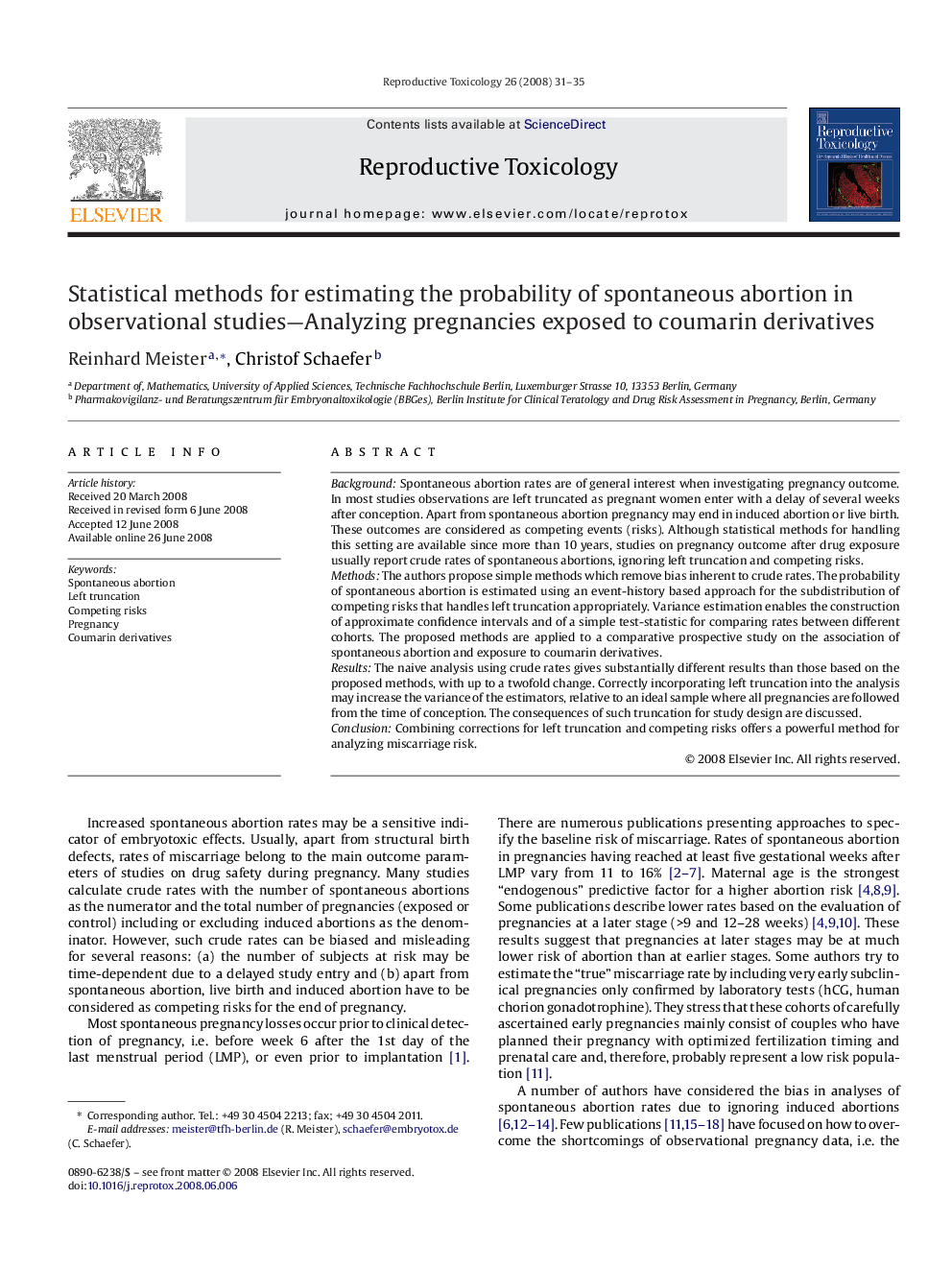| Article ID | Journal | Published Year | Pages | File Type |
|---|---|---|---|---|
| 2594459 | Reproductive Toxicology | 2008 | 5 Pages |
BackgroundSpontaneous abortion rates are of general interest when investigating pregnancy outcome. In most studies observations are left truncated as pregnant women enter with a delay of several weeks after conception. Apart from spontaneous abortion pregnancy may end in induced abortion or live birth. These outcomes are considered as competing events (risks). Although statistical methods for handling this setting are available since more than 10 years, studies on pregnancy outcome after drug exposure usually report crude rates of spontaneous abortions, ignoring left truncation and competing risks.MethodsThe authors propose simple methods which remove bias inherent to crude rates. The probability of spontaneous abortion is estimated using an event-history based approach for the subdistribution of competing risks that handles left truncation appropriately. Variance estimation enables the construction of approximate confidence intervals and of a simple test-statistic for comparing rates between different cohorts. The proposed methods are applied to a comparative prospective study on the association of spontaneous abortion and exposure to coumarin derivatives.ResultsThe naive analysis using crude rates gives substantially different results than those based on the proposed methods, with up to a twofold change. Correctly incorporating left truncation into the analysis may increase the variance of the estimators, relative to an ideal sample where all pregnancies are followed from the time of conception. The consequences of such truncation for study design are discussed.ConclusionCombining corrections for left truncation and competing risks offers a powerful method for analyzing miscarriage risk.
